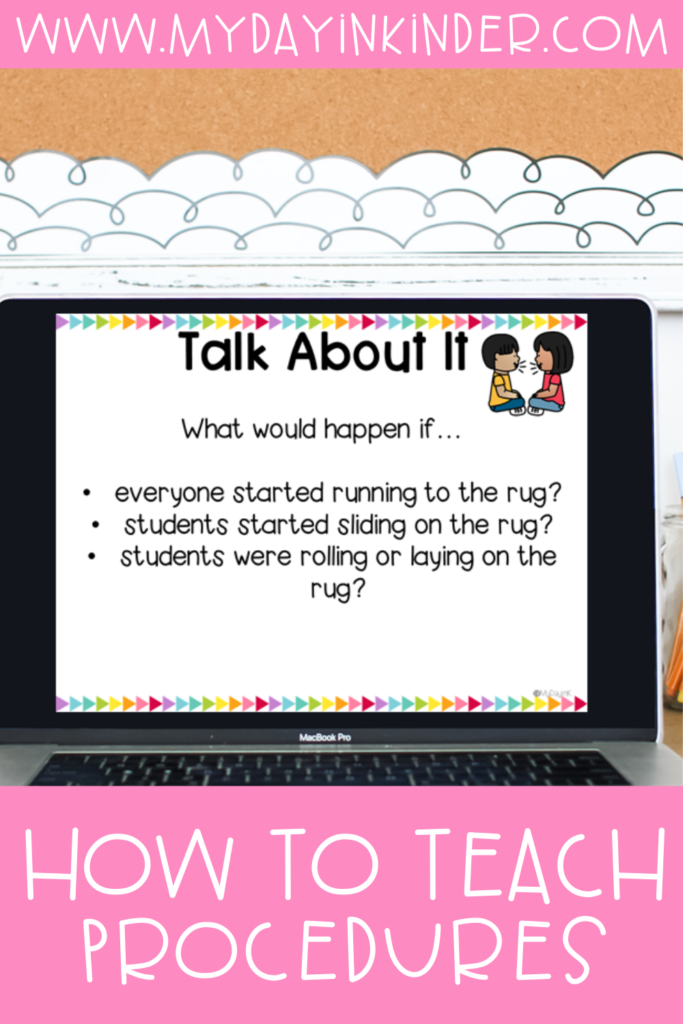Teaching Procedures in Kindergarten

It is so important to review routines and procedures at the beginning of the year. Students need many opportunities to both discuss and practice procedures. Classroom management is most successful when expectations are clear and enforced consistently.
The best way to introduce routines and procedures in Kindergarten is with visuals. I have shared HERE and HERE how powerful visuals are when it comes to managing your classroom. But, it takes more than just some graphics to help primary students remember what to do in your room at different points. If you want to avoid repeating yourself over and over again for the entire year, I recommend following three simple steps when teaching routines and procedures!
Step One: Discuss the Why and How
One powerful strategy for teaching routines and procedures in your classroom is to explain to your students why they are so important. We want students to be invested in following rules. This helps your classroom run more smoothly throughout the year. One example is coming to the carpet. How do you want your students to approach your carpet? Do you want them to walk or run? Come one at a time, or all at once? Whatever your behavior expectations are, teach them explicitly to your students. Model it so they can see what it should look like. Then, have a discussion about why it’s important. What would happen if everyone chose to run to the carpet? What could happen if everyone chose to come at the same time? How would it make others feel if one person chose to lay down on the carpet?
Having these discussions helps students see the importance of following procedures the way that you taught them. This also helps kindergarteners connect to the steps more concretely, so they are more likely to remember!

Step Two: Provide Time to Practice
There are very few things that a student can do perfectly after only hearing about it. Watching you perform a routine, and discussing the importance of it is a great start. But, you need to transition quickly to practice with your class. Be prepared for students to practice one procedure dozens of times over the course of the first two-three weeks of school. This repeated exposure under your guidance will ensure that they master the behaviors you want to see. Additionally, this helps them remember exactly what to do!
Step Three: Celebrate!
Positive reinforcement is crucial in kindergarten! If students exhibit the behavior you want them to display, praise them for it! Celebrate a job well done. Celebrate progress, even if your class hasn’t quite mastered a routine yet. Take time to praise your entire class, as well as individual students for a job well done. Students are more likely to repeat behaviors when they are rewarded for doing them, so lay the praise on thick for a few weeks.
Getting Started with Digital Visuals
Do you want a resource that includes procedures, discussion questions, and visual cues built into one? My Digital Classroom Procedure Slides guide your students through a routine from introduction, to discussion, to celebration. Grab your set, and teach procedures so that your students will remember them.


Awesome!!!
Would love to use this soon!
This is great information as I am new to kindergarten. I have taught upper elementary 3 and 4th never this low.
Hi Shannon, I’m so glad. Let me know if you have any questions. I am happy to help!